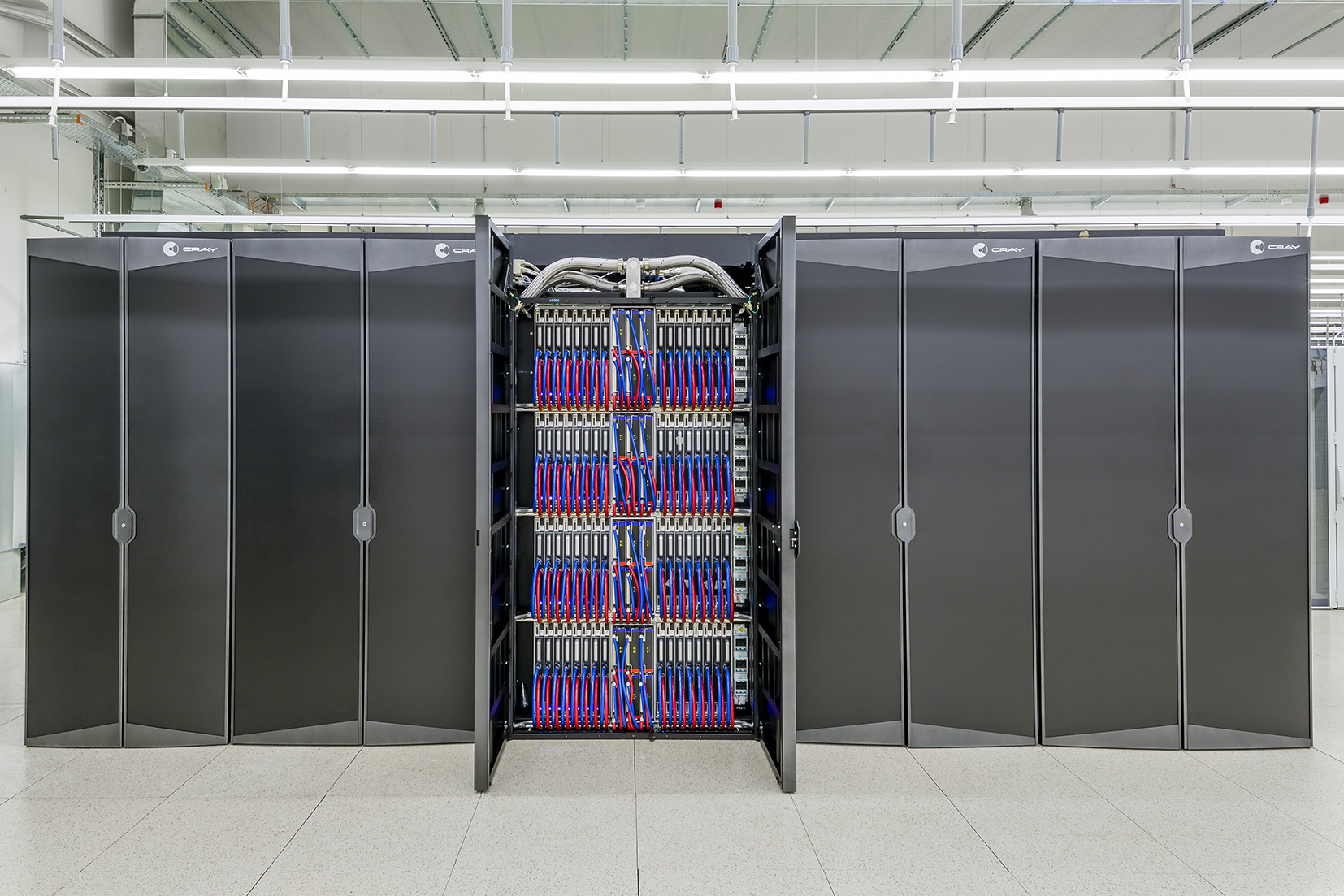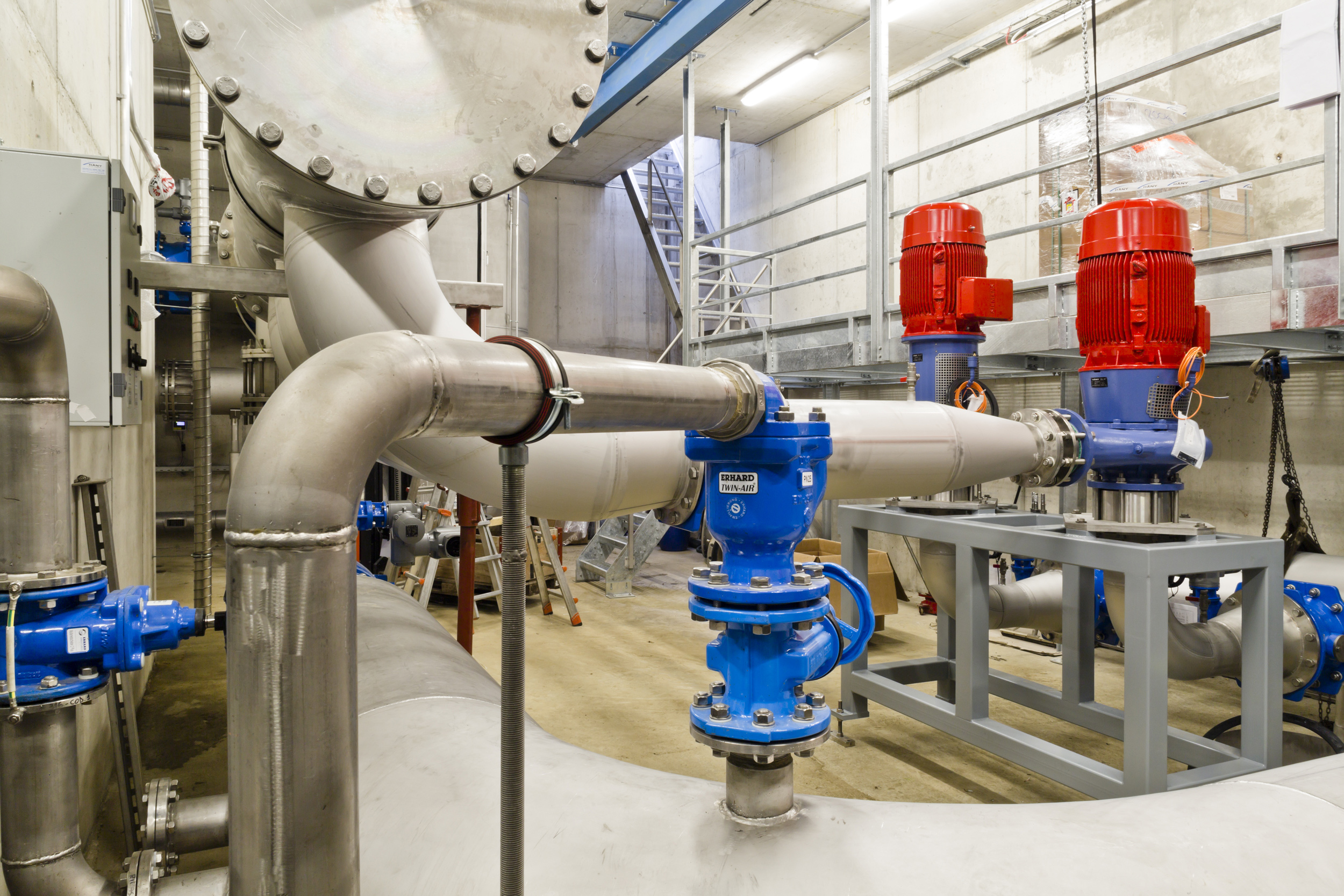At CSCS, energy efficiency is a key priority, even at high performance
The term "high-performance computer" already implies a high energy demand. Energy efficiency is therefore a central consideration in the procurement and use of supercomputers at the Swiss National Supercomputing Centre (CSCS) — just as it was during the planning of the new building in Lugano more than a decade ago.
CSCS develops and operates a high-performance computing (HPC) and data research infrastructure that supports world-class science in Switzerland, including research at CERN and the Paul Scherrer Institute (PSI). High-performance computers and the simulations performed on them are indispensable for research where theory reaches its limits or experiments are impossible. Neither the universe nor the climate, for example, can be reproduced and observed in the laboratory. Simulations also support experimental researchers in the search for new, stable material compounds that are used, for example, in efficient solar cells, electronic components, or medicines; simulations now even make it possible to external page predict biological processes that were only seen afterwards in experiments.

High energy efficiency in computer design
In 2012, CSCS procured the high-performance computer "Piz Daint", one of the world's most energy-efficient computers in the petaflop performance class (a computer that can perform a quadrillion computing operations per second) at the time. A collaborative initiative in which CSCS worked closely with hardware manufacturers, software developers, mathematicians, and scientists made this achievement possible. CSCS has since launched the Platform for Advanced Scientific Computing (external page PASC) as part of the High Performance Computing and Networking (external page HPCN) strategy adopted by the ETH Board. On one hand, this involves working with hardware manufacturers to select energy-efficient hardware, such as graphics processing units (GPU), and thus build modern, energy-efficient computer architectures. On the other hand, PASC supports the optimisation of codes and algorithms in the software used by the researchers within these modern computer architectures, so research is carried out more efficiently and goals are reached faster than on conventional supercomputers — saving not only time, but also energy.
The latest computer technologies continue to improve in this regard. Take "Piz Daint" for example, which has been upgraded several times with more efficient processor generations: Since the external page Green500 list of the world's most energy-efficient computers was introduced in 2013, the supercomputer has been in the top 10 a total of five times. In November 2016, it was even listed in second place among the world's most energy-efficient computers. With "external page Alps", which is scheduled to go into operation in 2023, CSCS will again increase the energy efficiency relative to the computing power many times over, thanks to new technologies. Already today, there are systems similar to "Alps" that are able to perform up to five times more computing operations per watt than previous technologies. "Alps" is thus expected to put CSCS once again in a top position worldwide in energy efficiency in supercomputing.

Carbon-neutral electricity
CSCS sources 100 percent of its electricity from hydropower and is carbon neutral. Furthermore, the energy consumption of the entire Centre in 2021 was around 37 gigawatt hours with an average output of around 4 megawatts. By way of comparison, the CERN and PSI research facilities have electricity requirements of 1300 gigawatt hours and 126 gigawatt hours respectively, according to recent media reports.
In addition to "Piz Daint", CSCS also operates the MeteoSwiss computer and other systems on behalf of partners and houses the ETH Euler computer and the external page Blue Brain computer. These partner systems account for approximately 35 percent of the total energy demand of the Centre. In addition, CSCS also provides computing capacity on "Piz Daint" — and eventually on “Alps” — to the external page MARVEL materials research network, the University of Zurich, and the PSI.
High efficiency starts with infrastructure
Careful planning made CSCS one of the world's most energy-efficient data centres in the world when in it opened in August 2012, and it remains so today with a PUE (Power Usage Effectivness) rating below 1.2. The external page PUE value indicates how effectively the supplied energy is consumed in a data centre. The closer the value approaches to 1.0, the more energy-efficient the data centre.
Even ten years after the new building was completed in Lugano, additional new data centre buildings still aim for "only" a PUE below 1.2. This is also the case for ETH Zurich’s plans for a data centre on the Hönggerberg campus (more on this soon).
The CSCS data centre especially owes its energy efficiency to its external page sophisticated and innovative cooling system that uses lake water from Lake Lugano. The cooling infrastructure is designed to cool high-performance computers with an output of up to 14 megawatts — research infrastructures such as "Piz Daint" or its successor "Alps" — in a so-called first cooling circuit. This cooling circuit is also used to cool the external page Minergie-certified CSCS office building in summer.
After the first cooling cycle, the relatively heated water in the second circuit is still able to cool computers with a total output of up to 7 megawatts. The second circuit cools, among other things, the air of housings — known as cooling islands — in which these smaller systems and data storage devices are housed.
The external page CSCS building is also heated with the waste heat from the return of the second cooling circuit together with a heat pump. The heating flow is thus low at 30 degrees Celsius. Thanks to this carefully designed system, one and the same infrastructure is used in the office building for heating in winter and cooling in summer.
Energy synergy
In order to reduce the energy demand as much as possible and to reuse energy where possible, CSCS has taken even further innovative measures in recent years: Before the water circuit enters the lake again, it drives two micro-turbines to produce even more electricity. At 200 megawatt hours per year, the electricity generated by the turbine covers more than 30 percent of the energy needs of the pumping station itself, which pumps the water over a distance of 2.8 kilometres and 30 metres uphill to the data centre.

Additionally, the waste heat from the computers is not only used to heat the CSCS office building. Together with the Ticino electricity supplier AIL (Aziende Industriali Lugano), CSCS built an infrastructure that supplies heat to the city of Lugano as well as the new campus of the Università della Svizzera italiana with the SUPSI University of Applied Sciences — the campus requires around 742 megawatt hours of thermal energy per year to heat the buildings. AIL is also currently building a thermal power plant that will make it possible to produce a further six megawatts of heat with the waste heat from CSCS. The heat output can eventually be increased to up to 30 megawatts when combined with heat pumps.
All in all, the operation of CSCS’s high-performance computers is embedded within a well thought-out and sustainable energy strategy.
Comments
No comments yet